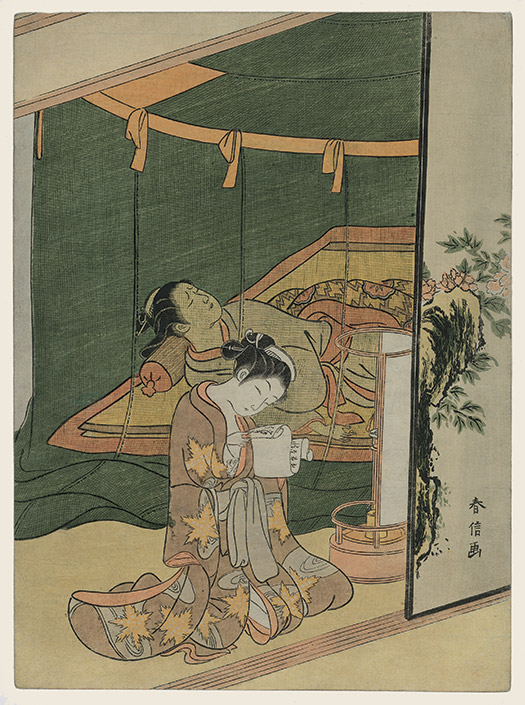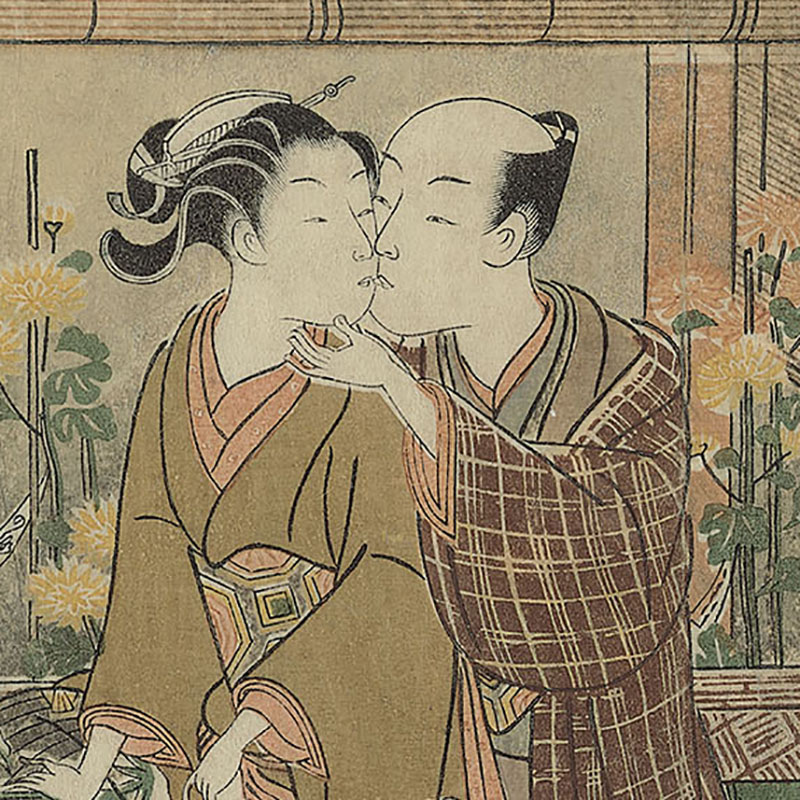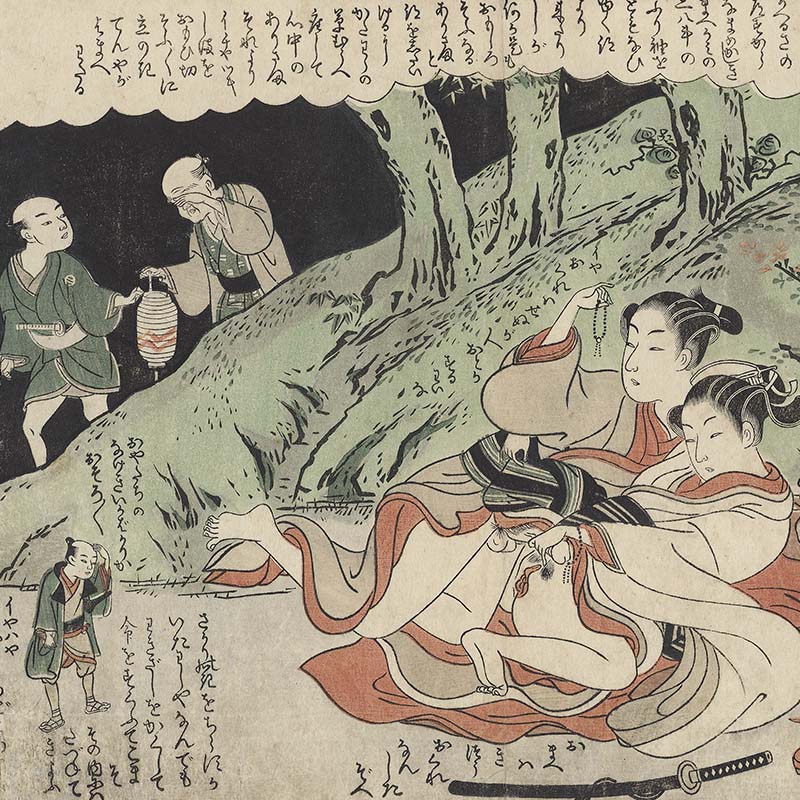Suzuki Harunobu
c. 1725 - 1770
c. 1765-70
Vertical chūban, 272 x 201 mm
Provenance:
on the verso a circular red stamped collector's mark which includes two Japanese characters.
Signed Harunobu ga. Fine impression and colour. In very good condition.
A young woman is depicted reading a love letter by candlelight while another sleeps beneath a mosquito net.
A very rare print; we only know of one other impression of this design, preserved in the Arthur M. Sackler Museum, Harvard University, Massachusetts, object number 1933.4.2635.
Reference:
The Harvard print was published by Narazaki Muneshige, Ukiyo-e shuka [Collection of the Masterpieces of Ukiyo-e Prints in Museums] Volume 8: Foggu Bijutsukan [Fogg Art Museum, Harvard University], Neruson Bijutsukan [Nelson Atkins Museum]..., Shogaku-kan (Tokyo, Japan, 1980 [Showa 55]), pp. 91, 183, illustrated in colour, pl. 051.
Price on application
Information on the master
There is no doubt that Harunobu ranks as one of the most enchanting masters of ukiyo-e in 18th century. He is said to have studied under Shigenaga, but his early prints are in the Torii and Toyonobu manner. By 1762, however, he had already developed his unique style, which was soon to dominate the ukiyoe-e world.
In 1765 there was a revolution in Japanese woodblock printmaking. Toward the end of 1764, Harunobu was commissioned to execute a number of designs for calendar prints for the coming year. Various noted literati of Edo contributed designs and ideas, and the printers outdid themselves to produce technically unusual work. From this combination of talents was born the nishiki-e (brocade picture) and the surimono genre was also beginning to emerge. These prints were issued at New Year, 1765. Harunobu’s full genius for both colour and line was quickly developed by this new technique. He was able to attain a polychrome brilliance in his prints whose standards have seldom been superseded. Though we know nothing of Harunobu's formal education, he was certainly one of the most literate of the ukiyoe-e artists. In many of his prints, verses and design are wedded in a happy combination seldom seen before or after, and his ideal of femininity was one of the most influential in the history of ukiyo-e.
Other works of the master


